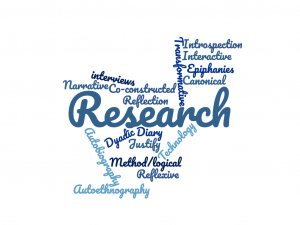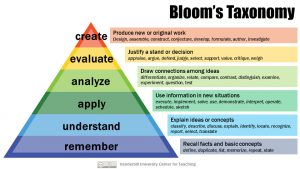The amount of time to get through the assigned readings was more than what I expected, having forgotten the idea that each hour of class probably requires two hours of preparation. Plus, my ability to analyze and evaluate needs a substantial amount of actual ruminating as what I have read percolates through my accumulated knowledge. Therefore, it takes more time than anticipated – new skills for estimation of time to complete a job are required!
I appreciate that our first set of readings included a movie to set the questioning tone for our degree. Why technology and project-based learning and why now? Yes, the movie left much unsaid by focusing on just a few students, but it is a movie; when watching it as a documentary, you have to question what is behind the scenes that could be filmed to prove the totally opposite points. Similarly, the two readings presented opposing extremes of teaching methods while referencing the same study of medical students and interpreting the data to support their position. The truth likely lies somewhere in the middle.
The movie, Most Likely to Succeed, was presented in a way to convince the audience that project-based learning is the teaching method of the future. Some essential truths presented were:
– Education systems created for the industrialized age do not necessarily apply to our technology/information age.
– When you DO it, you remember it because you were involved. (which actually works well when you consider the apprenticeships that took place in the Medieval period and are still in place as an education method today).
– Problem-based learning develops soft skills (competencies) needed for moving forwards in a world where knowledge can be researched in an instant and basic skills can be completed by a robot.
– Problem-based learning encourages growth mindset, and can build perseverance, resourcefulness and resilience.
– Actually creating a final product results in the satisfaction of having done something new and helps students with learning to deal with stress (Stress is a very real problem in our current workplaces. At school, we can, hopefully, provide students with more tools to manage and cope with stress.)
Our two readings, Teaching for Meaningful Learning (Barron & Darling-Hammond) and Why Minimal Guidance During Instruction Does Not Work (Kirschner, Sweller & Clark). My primary disagreement with the Kirschner et al. article was its limited definition of learning “as a change in long term memory”. The Merriam Webster dictionary defines learning as
1: the act or experience of one that learns – a computer program that makes learning fun
2: knowledge or skill acquired by instruction or study – people of good education and considerable learning
3: modification of a behavioral tendency by experience (such as exposure to conditioning)
The Oxford Dictionary defines learning as
“The action of receiving instruction or acquiring knowledge; spec. in Psychology, a process which leads to the modification of behaviour or the acquisition of new abilities or responses, and which is additional to natural development by growth or maturation; (frequently opposed to insight).”
Both of these definitions reference behaviour and behaviour modifications as a part of learning and the Kirschner et al. article downplays the importance of this. Even when describing crossing the street, Kirschner et al. only alludes to the importance of “information in long-term memory (which) informs us how to avoid speeding traffic, a skill many other animals are unable to store in their long-term memories” and does not include the requirement of trying out that information multiple times in a real-life situation in which more information is gathered until you do not have to think about the information and your behaviour in most crossing-the-street situations is automatic. How successfully would a person cross a street if they only relied on memorized information? And I am not talking about crossing at lights, but at an uncontrolled area that was busy? There is a need for both gathering information as well as real-life opportunities to use that information.
Kirschner et al. also states that all information stored in working memory is lost in 30 seconds and only a few (2-3) new pieces can be retained, but items in long-term memory can be brought in over and over. According to the article, inquiry-based instruction does not support the limitations of working memory. Yet part of project-based learning is the requirement for students to communicate and make lists of ideas, information gathered and approaches tried, so they will be bringing in the information multiple times in order to get it stored in working memory. This is no different than bringing in the new bits of learning multiple times by having students hear it or practice it multiple times.
In my opinion, we need a happy medium; a balanced approach. Variety is good for students to be excited and not become stagnant. Some drill is helpful to speed up recall and develop behaviours that are automatics. Exploration is helpful to test basic knowledge and connect what you know with what you are learning. No one method is ‘the best’. Even Kirschner et al. quoted other studies while referring to the practice at medical school where students experience problem-based learning:
“as students are grappling with a problem and confronted with the need for particular kinds of knowledge, a lecture at the right time may be beneficial . . .participants trained in PBL retained the backward-directed reasoning pattern, but did not seem to acquire forward-directed reasoning, which is a hallmark of expertise.”
As Barron and Darling-Hammond’s chapter states:
“When teachers don’t fully understand the complexities of inquiry-based learning, they may simply think of this approach “unstructured,” and may, as a result, fail to provide proper scaffolding, assessment, and redirection as projects unfold.”
Successful education of the students in front of you is never the same from group to group and therefore we should base our educational practice in a broad mix of instructional techniques. We should not underestimate what type of educational style will be the ‘proper’ one to reach our students.







Recent Comments